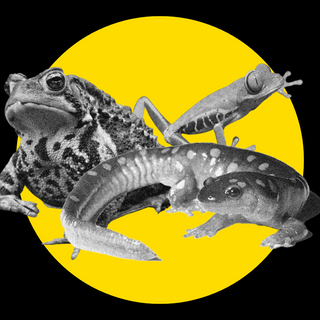
How Streaming Turned Art into Content, and People into Consumers
Streaming failed in its promise, leaving consumers with less agency, ownership, and power over the media they engage with.

Nearly a century ago, two culture theorists defined the culture industry as allowing the “freedom to choose what is always the same.” It’s a statement that has always resonated – but perhaps applies to nothing more than the streaming culture of today.
Streaming monopolies offer endless choices, giving the illusion of control and even freedom to those who consume their wares. But by the very nature of the business model, it’s a kind of control that’s only ephemeral. And moreover, through a sleight of hand, it’s led to a situation where we don’t question the fact that we consume things rather than experience the selective things that are displayed to us. Everything else is lost to the great algorithmic abyss.
“As a consumer, I loathe the fact that we have little to no say in the determination of the kind of media that’s accessible. Some of us have a moral opposition to piracy, because of which we are restricted to the media curated by the platforms we’re subscribed to.”
We’re in the midst of a churn in the world of art – particularly in how we consume it. And it has to do with what theorist Nick Srnicek calls “platform capitalism,” where algorithms that feed on user information take decision-making out of our hands entirely. “… twenty-first-century advanced capitalism is coming to be centered upon extracting and using a particular kind of raw material: data,” Srnicek writes.
As streaming platforms went from being hosts of preexisting work to active producers themselves, they began to use the data itself to make content.
“Online content streaming is increasingly dependent on collecting a vast treasure trove of data about you,” Pat Walshe, a data protection and privacy consultant, told Wired. And this is not only changing what users see on their personalized screens – it’s changing the way media is produced.
The ubiquity of streaming means that maximizing consumption is the logic of the entertainment business model – such that all art is lumped together as content. “And so we have our conversation about the enormous cultural restructuring that is going on, but we are having it in a senseless vocabulary where ‘content’ takes the place of ‘art’ and ‘information’ substitutes for ‘culture,’ ‘knowledge,’ ‘literature,’ ‘music,’ ‘cinema’ and ‘meaning.’ All the mysteries of the creative process are flattened: the fickle nature of the muse, the idiosyncrasies of scholarship, and the tenacity required to compose a novel. All are reduced to nothing by analogies derived from the logic of computer code, data processing and high-tech business models,” wrote Astra Taylor.
Under the guise of giving consumers more agency in their choices, streaming platforms tell us what we’re inclined toward and show consumers a catalog custom-made for them. It closes off any room for discovery, wonder, or experimentation that makes engagement with art challenging or moving in unexpected ways.
Related on The Swaddle:
What the Loss of Movie Theaters Means for a Culture
“Netflix—like many disruptive media phenomena before it, including radio and broadcast television—is a boundary object that exists between, and inevitably problematizes, the conceptual categories used to think about media,” writes theorist Ramon Lobato in his book Netflix Nations. It’s a unique giant that not only creates the things we watch, but also decides what we can watch.
It has to do with the fact that streaming platforms have definitively changed ownership. No longer do we want to “own” titles that we love or collect them in a physical sense – in part because owning things is increasingly unaffordable.
“Now instead of ownership we talk about access… there’s this hypothesis that people value access over ownership,” Anuja Pradhan, a consumer cultures scholar, tells The Swaddle.
At first it was for the better – that is, until streaming became more or less like cable TV once again, minus the agency, plus the costs.
Netflix, for one, has begun to try to salvage its subscriber problem with a flood of mediocre content. The few good ones – like the recently acclaimed adaptation of Neil Gaiman’s Sandman – are unlikely to return for another season due to the high costs involved. “While companies like Disney are producing fewer movies for cinema as they focus exclusively on blockbusters, they’re all developing a flood of content for their streaming platforms to keep people’s attention — but the quality of those programs has notably declined,” argues critic Paris Marx.
Enter passive consumption. More than ever, people have begun to engage with the media on offer passively – with entire seasons of TV shows drifting by in the background. Music, too, is ambient, with algorithmic mood playlists playing an endless mix of sounds that fill up the pauses in our own lives. It may have to do with the proliferation of media that has little artistic merit of its own, but makes for an attractive visual experience. Emily in Pariswas one such enterprise – a show that was widely panned for its thinly written plot and dialogue, but which served as eye candy akin to short-form social media content. “Sometimes, I am just watching a show while doing my work, not “actively” listening and relishing content. Sort of like a background thing,” says Garima Rao, 20. It makes for content that’s viewable but not really seen, music that one hears but isn’t listening to.
Given how it’s very rare for any particular work to stand out on streaming platforms, we’re never completely bored, or bored enough to recognize that we’re bored. “In the first lecture I teach in my course, I talk about the importance of boredom,” says Pradhan. “Previously, we used to have time for absolute boredom – when you’re in this space, you start to question your life, and society, and the capitalist system that we’re a part of,” she says. Instead, streaming incentivizes blanketing the mind in noise, drowning out any other thoughts we may have.
“It’s very much in the favor of companies to keep you in this form of mild boredom through streaming and other ways, so you don’t necessarily reflect on the ideas you’ve bought into, the ideals of living in a consumer society, and consumption being the key to happiness.”
This is not to say that streaming services are actively part of a nefarious plot to lull society into a mass state of hypnosis – but it may well be the effect it has anyway. In a culture of increasingly punishing work obligations, hustle culture, and lower securities that preclude any chance of resting easy, it may well be that people are simply too exhausted to think. Content, then, offers escape – irrespective of its quality.
What streaming platforms offered as a promising alternative, then, has failed in delivering. But with streaming having replaced most other modes of consuming film, TV, and music, it feels like there’s little to do about it.
The pandemic has effectively ensured that streaming became the dominant form of media consumption of our times. But there are relatively few streaming services in the market – in their bid to compete with one another over revenues and views, art itself suffers. Mergers and licensing expenses turn art into commodities that are phased in or out, depending on their commercial viability. This means that even older, well-loved and established media are subject to disappearing from our reach forever – at the mercy of streaming execs making business decisions over artistic ones.
Related on The Swaddle:
Are IG Reels and TikTok Ruining Music?
“Disney (DIS) is hiking prices after losing a ton of money on its various streaming services. Netflix recently jacked up prices and is cracking down on password sharing. Warner Bros. Discovery, CNN’s parent company, is scrapping films and series left and right and reversing its controversial everything-under-one-streaming-roof strategy. All three services are expanding their ad-supported offerings,” notes CNN, declaring that the “streaming wars are over.” It shows how there’s a crisis within streaming that’s prompting sweeping, unilateral business decisions – with consumers caught in the middle.
Streaming platforms, with their singular focus on profits, viewership, and subscriber counts, have pushed consumer culture to its extreme.
“If we look at things from the business-algorithmic angle…yes, it might seem as though they control what should be consumed by whom,” says Shriram Venkataraman, a digital anthropologist, about the emergence of platform monopolies.
The platform-model of media engagement that streaming mainstreamed applies to books too – an even more dire crisis given the crisis of publishing and real-world bookstores. “They don’t allow you to buy things on Kindle or Audible to download the book files or the audio files – you have to use their app. There’s no guarantee that even though I paid money for it, I’ll be able to access the same file if they take it off their platform” Naomi, 24, adds.
Streaming platforms are beginning to realize the value of slow consumption, with several going back to the weekly episode drop model of TV. It might signal a growing awareness within streaming companies of a wider audience fatigue with passive, disengaged viewing on the one hand, or binge-watching on the other. Netflix, which arguably pioneered the binge-watching mode of consumption (its CEO Reed Hastings was famous for quipping that they’re “competing with sleep… and winning”), may soon begin to drop this strategy.
But changing the viewership model still points to the inordinate influence that streaming platforms have over dictating the way people organize their time and leisure – and at the end of the day, with platforms retaining control over what they create and broadcast, it also doesn’t give agency back to consumers.
Some point to cooperative platforms as a way out of the conundrums about ownership, creativity, and accessibility of art – or as one writer put it, a Socialist Spotify.
At the heart of our collective reckoning with streaming is our agency. Streaming monopolies increasingly erode it – compelling us to think, act, and consume in ways dictated for us by platform analytics. Some, like Venkataraman, say it may be too early to tell what the impact of streaming may be on our collective culture. Others like Pradhan are a little more optimistic about the potential of streaming – where cooperative platforms can democratize art creation and engagement, and diverse voices get more space. We can’t ever “go back” to the old – it isn’t desirable to aspire to it either. “it would be a mistake to present the old gatekeepers in romantic colours compared to new technology companies. In both cases, we are talking about powerful institutions that define, control and manage the boundaries of what is art and culture,” Elinor Carmi, research associate at Liverpool University’s communication and media department, told BBC. But there’s work to do to get there, and it involves taking the power of art and meaning back into our own hands.
Rohitha Naraharisetty is a Senior Associate Editor at The Swaddle. She writes about the intersection of gender, caste, social movements, and pop culture. She can be found on Instagram at @rohitha_97 or on Twitter at @romimacaronii.
Related


Study Finds Link Between Amphibian Deaths and Increased Malaria Epidemics
